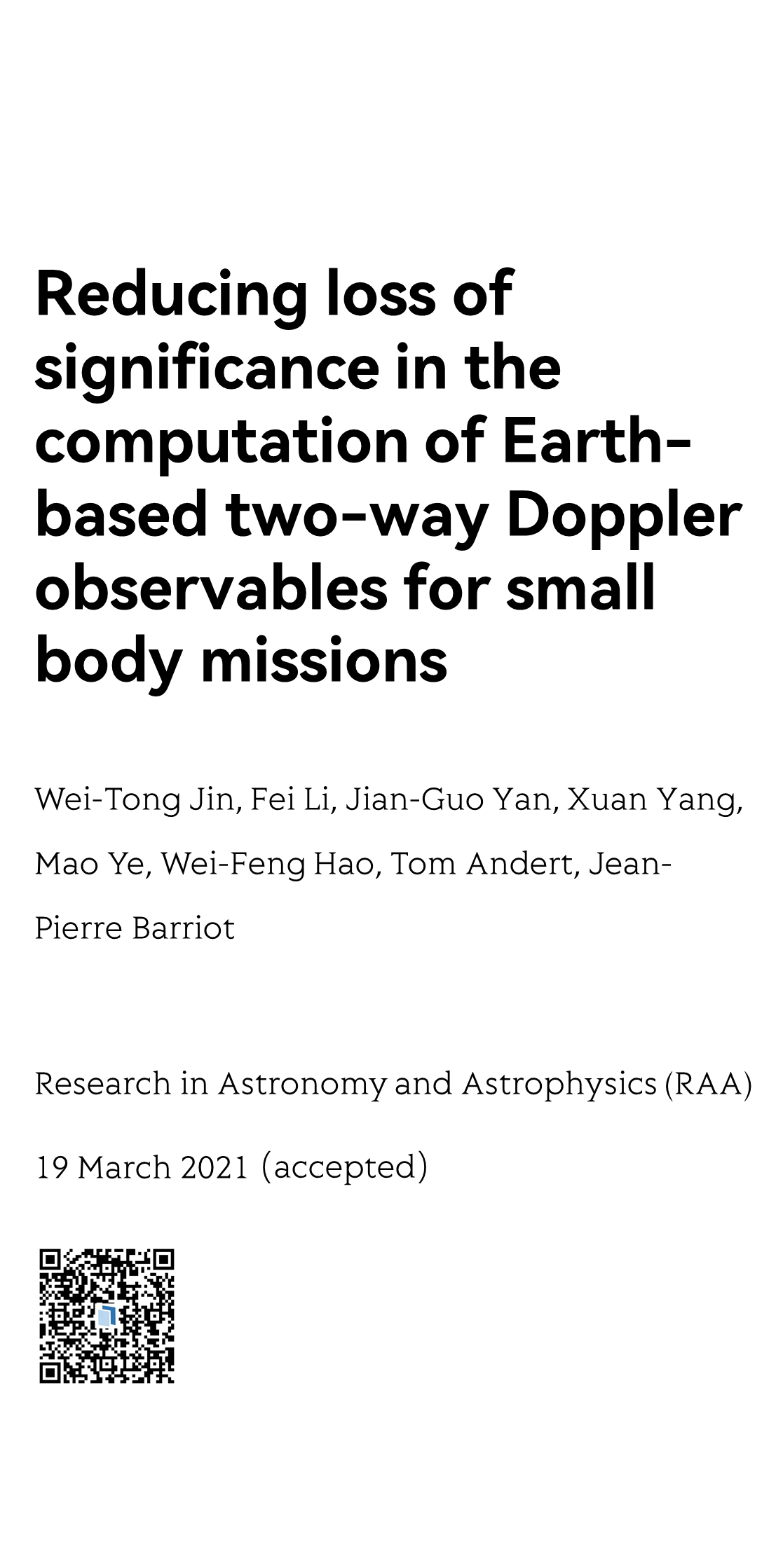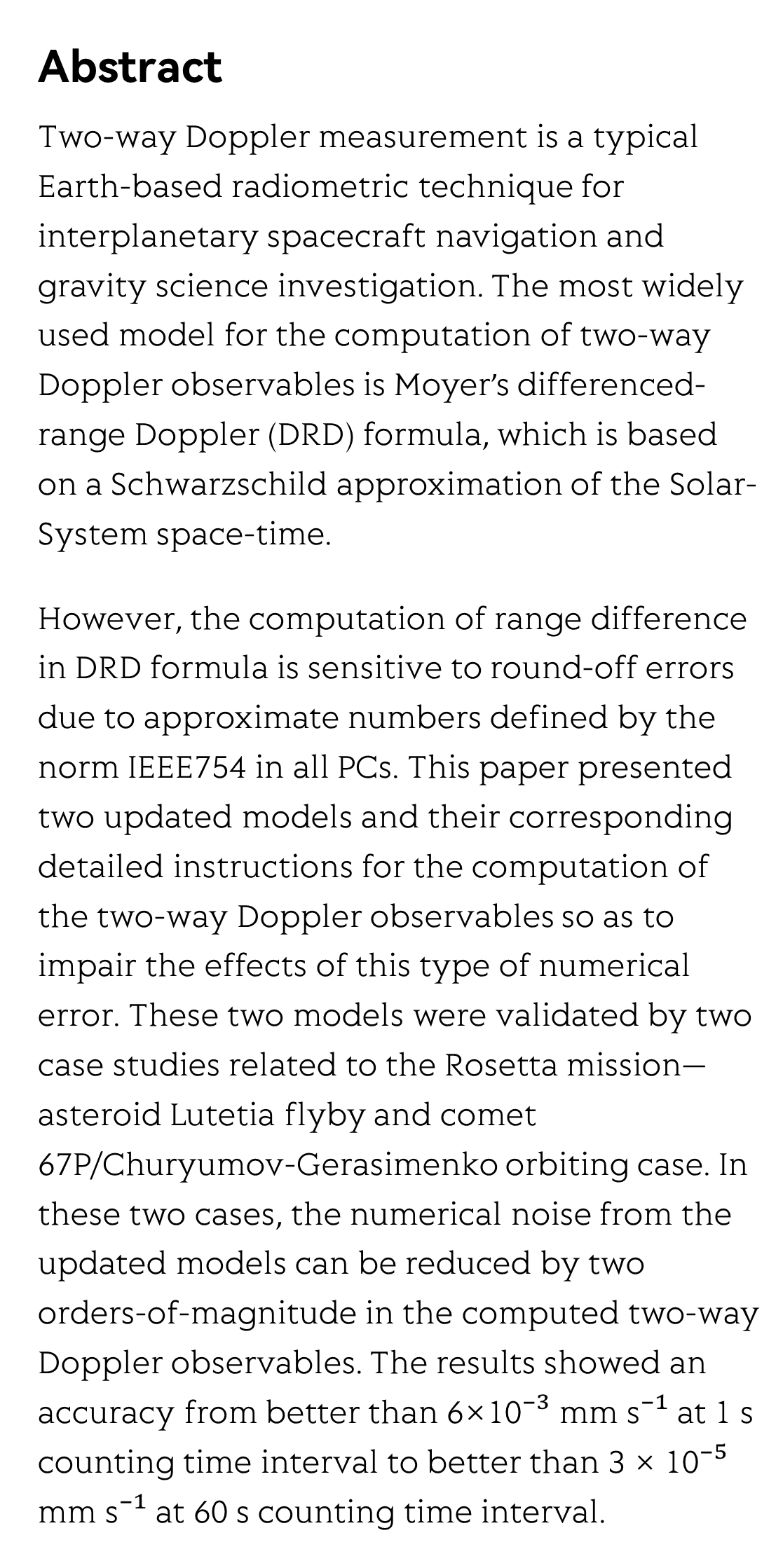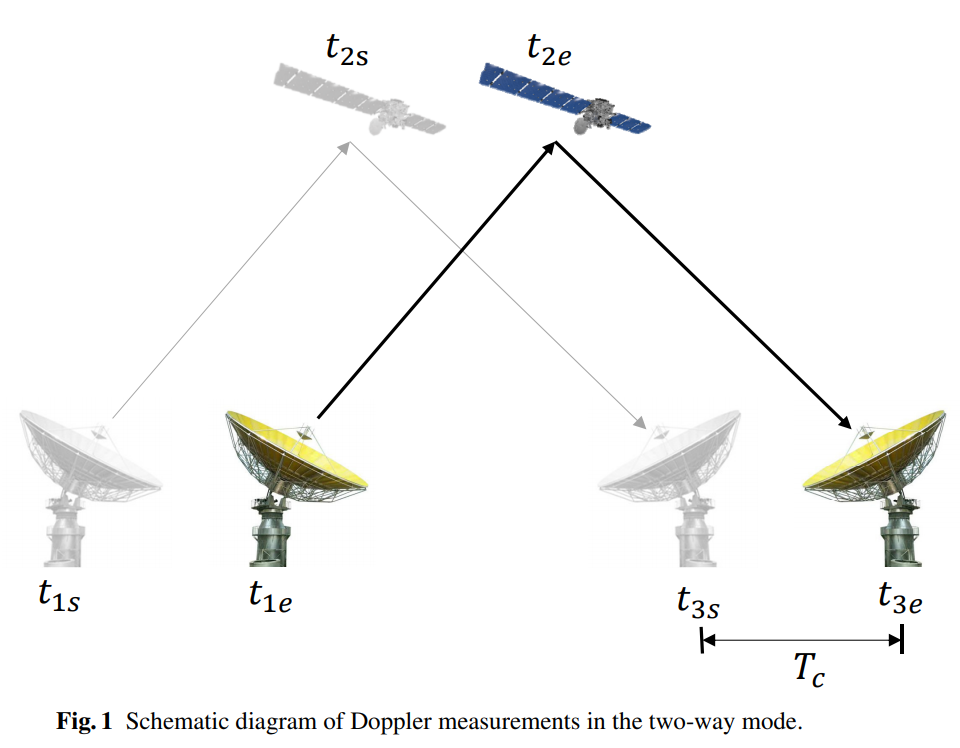(Peer-Reviewed) Reducing loss of significance in the computation of Earth-based two-way Doppler observables for small body missions
Wei-Tong Jin 金炜桐 ¹ ², Fei Li 李斐 ¹ ³, Jian-Guo Yan 鄢建国 ¹, Xuan Yang 杨轩 ¹ ², Mao Ye 叶茂 ¹, Wei-Feng Hao 郝卫锋 ³, Thomas Paul Andert ⁴, Jean-Pierre Barriot ⁵
¹ State Key Laboratory of Information Engineering in Surveying, Mapping and Remote Sensing, Wuhan University, Wuhan 430079, China
中国 武汉 武汉大学测绘遥感信息工程国家重点实验室
² State Key Laboratory of Satellite Navigation System and Equipment Technology, Shijiazhuang 050200, China
中国 石家庄 卫星导航系统与装备技术国家重点实验室
³ Chinese Antarctic Center of Surveying and Mapping, Wuhan University, Wuhan 430079, China
中国 武汉 武汉大学中国南极测绘研究中心
⁴ Universitat der Bundeswehr München, Neubiberg, Bayern, 85579, Germany
⁵ University of French Polynesia, BP 6570, F-98702 Faa'a, Tahiti, French Polynesia
Research in Astronomy and Astrophysics (RAA), 2021-03-19
Abstract
Two-way Doppler measurement is a typical Earth-based radiometric technique for interplanetary spacecraft navigation and gravity science investigation. The most widely used model for the computation of two-way Doppler observables is Moyer’s differenced-range Doppler (DRD) formula, which is based on a Schwarzschild approximation of the Solar-System space-time.
However, the computation of range difference in DRD formula is sensitive to round-off errors due to approximate numbers defined by the norm IEEE754 in all PCs. This paper presented two updated models and their corresponding detailed instructions for the computation of the two-way Doppler observables so as to impair the effects of this type of numerical error. These two models were validated by two case studies related to the Rosetta mission—asteroid Lutetia flyby and comet 67P/Churyumov-Gerasimenko orbiting case. In these two cases, the numerical noise from the updated models can be reduced by two orders-of-magnitude in the computed two-way Doppler observables. The results showed an accuracy from better than 6×10⁻³ mm s⁻¹ at 1 s counting time interval to better than 3 × 10⁻⁵ mm s⁻¹ at 60 s counting time interval.
Flicker minimization in power-saving displays enabled by measurement of difference in flexoelectric coefficients and displacement-current in positive dielectric anisotropy liquid crystals
Junho Jung, HaYoung Jung, GyuRi Choi, HanByeol Park, Sun-Mi Park, Ki-Sun Kwon, Heui-Seok Jin, Dong-Jin Lee, Hoon Jeong, JeongKi Park, Byeong Koo Kim, Seung Hee Lee, MinSu Kim
Opto-Electronic Advances
2025-09-25
Dual-frequency angular-multiplexed fringe projection profilometry with deep learning: breaking hardware limits for ultra-high-speed 3D imaging
Wenwu Chen, Yifan Liu, Shijie Feng, Wei Yin, Jiaming Qian, Yixuan Li, Hang Zhang, Maciej Trusiak, Malgorzata Kujawinska, Qian Chen, Chao Zuo
Opto-Electronic Advances
2025-09-25





